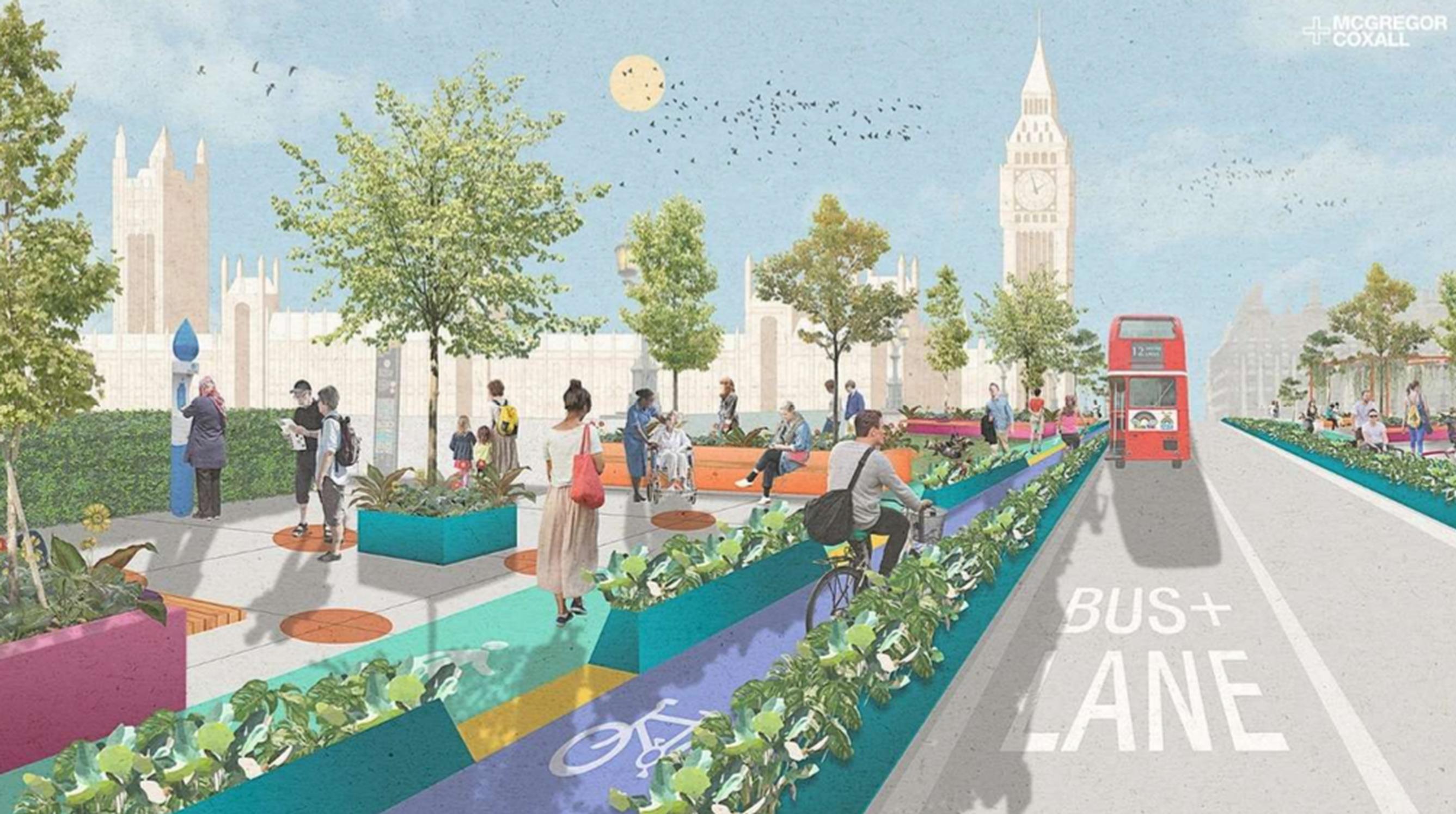

With furloughed people who cannot work from home being encouraged to return to their workplaces, but without using public transport, and restrictions on amount of exercise being lifted, streets and urban spaces will be put under immediate pressure. This has led local authorities to rapidly introduce traffic-free periods in city centres and neighbourhoods; create low traffic neighbourhoods; undertake pavement extensions at pinch points or busy areas; and create temporary or ‘pop-up’ cycle routes.
The Urban Design Group has published a practical guide to implementing fast-track changes to street design using measures that can be undertaken within the powers of a local authority and without the need for lengthy bureaucracy.
The group says that its ‘How to Guide’ will help local authorities provide more space for work, movement, children and promoting wellbeing. The guide outlines the duties local authorities have to secure the safety of pedestrians and cyclists, and the actions that can be quickly taken to provide that safety and without timewasting and expensive bureaucracy.
Robert Huxford, director of Urban Design Group, said: “Local authorities are under a duty to use the functions conferred upon them in the Road Traffic Regulation Act to secure the safe movement of the public. They also have duties to both careful and negligent road users, and children, elderly and disabled people. They don’t need to be afraid of using the powers they have to create safer streets. Local authorities have a massive challenge ahead, and little resource to meet it, but the changes made now will help to avert the dangers that lie beyond the present crisis: air pollution, poor physical and mental health from sedentary lifestyles, and climate change.”
The guide sets out how local authorities can create better space for making movement safer, leisure, children’s play and neighbourhoods.
Founded in 1978, the Urban Design Group is an organisation that works to improve the quality of new housing and urban development in the UK and internationally. Two of its executive committee set out their concerns and ambitions for urban space.
Christopher Martin, Director of Urban Movement, said: “The way we shape our towns and cities is directly linked to our success, health, and happiness. For too long we have allowed towns and cities to service commodities but not society. We need to learn from this trauma and focus on using the space we have to allow people and society to flourish. We need to act fast to protect our cities. We need to be (re)active to break bad habits and find gracious solutions to the challenges we face that allow people to do what they need to do whilst living life and supporting others.
“On the ground we need to actively enable and invite people to walk and cycle because that helps others and supports society. We need to actively discourage people from diving into cities if they don't have to because this harms others. So we take space from vehicles - protecting space for essential trips - and give it to walking and cycling in ways that add colour, life, vibrancy and joy”
Urbanist Scott Elliott Adams said: “Let's be bold, let's be creative. Our streets can and should work to deliver economic, social and environmental benefits as people-friendly spaces. Now is the time to act. We know what to do, we just need the will.
“As we ease lockdown measures across the UK in the coming weeks and months, we have a short window of opportunity to best help facilitate the recovery. It is critical to enable sufficient space for people to move around for commuting, errands, exercise and daily life.
“Our streets are too small to accommodate significant growth in car usage, but we are able to facilitate substantial growth in the number of people walking and cycling by temporarily re-allocating road space. We can create 'Life-Saving Streets' quickly, efficiently and affordably whilst also delivering more vibrant and friendly streets and spaces that will benefit local high streets.”
The ‘How to Guide can be found by clicking here
The McGregor Coxall design studio has reimagined how Westminster Bridge could be quickly transformed by bringing in additional walking space, protected cycle lanes, and a bus lane, as well as extra space for people to enjoy the views, fresh air and planting, while maintaining physical distancing as lockdown measures are eased.
The artist’s impression maintains traffic lanes for essential vehicles, however space for non-essential traffic is given over to pedestrians and cyclists. This would assist with a likely significant increase of people choosing active transport modes as the government suggests people should choose to walk or cycle due to limited capacity on public transport as physical distancing measures continue.
These sorts of measures would require minimal physical intervention, lines can be painted, coloured surfaces can be quickly overlaid on the existing tarmac, planters can be placed in position. Legal processes can be completed in a week or less.
TransportXtra is part of Landor LINKS
© 2025 TransportXtra | Landor LINKS Ltd | All Rights Reserved
Subscriptions, Magazines & Online Access Enquires
[Frequently Asked Questions]
Email: subs.ltt@landor.co.uk | Tel: +44 (0) 20 7091 7959
Shop & Accounts Enquires
Email: accounts@landor.co.uk | Tel: +44 (0) 20 7091 7855
Advertising Sales & Recruitment Enquires
Email: daniel@landor.co.uk | Tel: +44 (0) 20 7091 7861
Events & Conference Enquires
Email: conferences@landor.co.uk | Tel: +44 (0) 20 7091 7865
Press Releases & Editorial Enquires
Email: info@transportxtra.com | Tel: +44 (0) 20 7091 7875
Privacy Policy | Terms and Conditions | Advertise
Web design london by Brainiac Media 2020